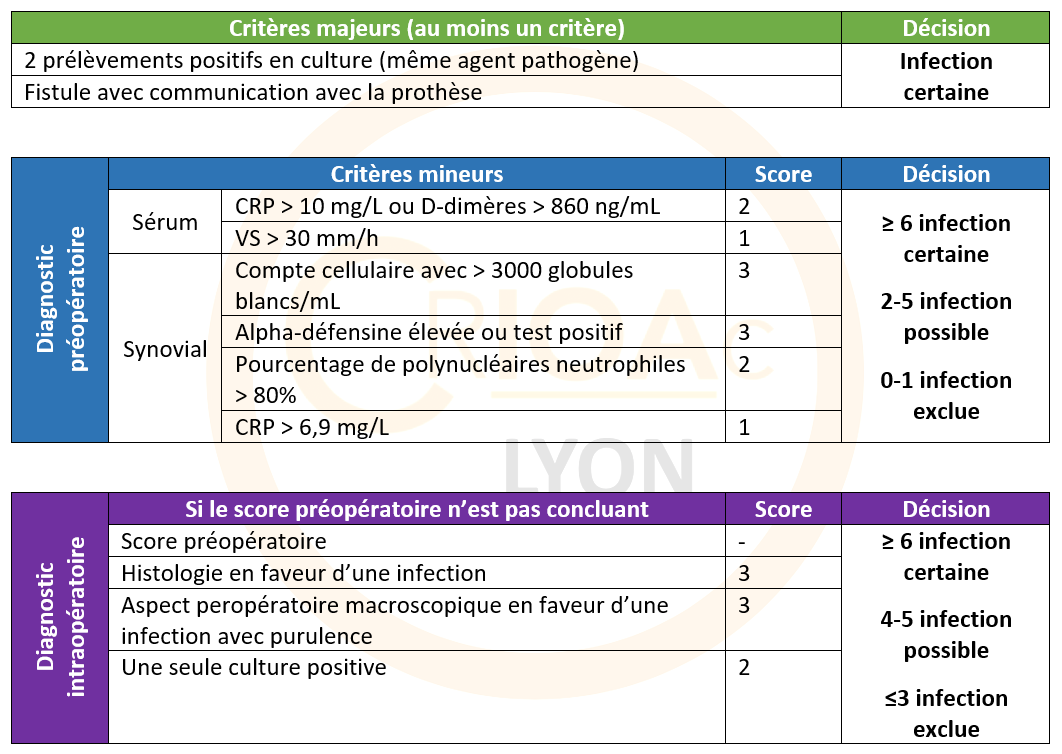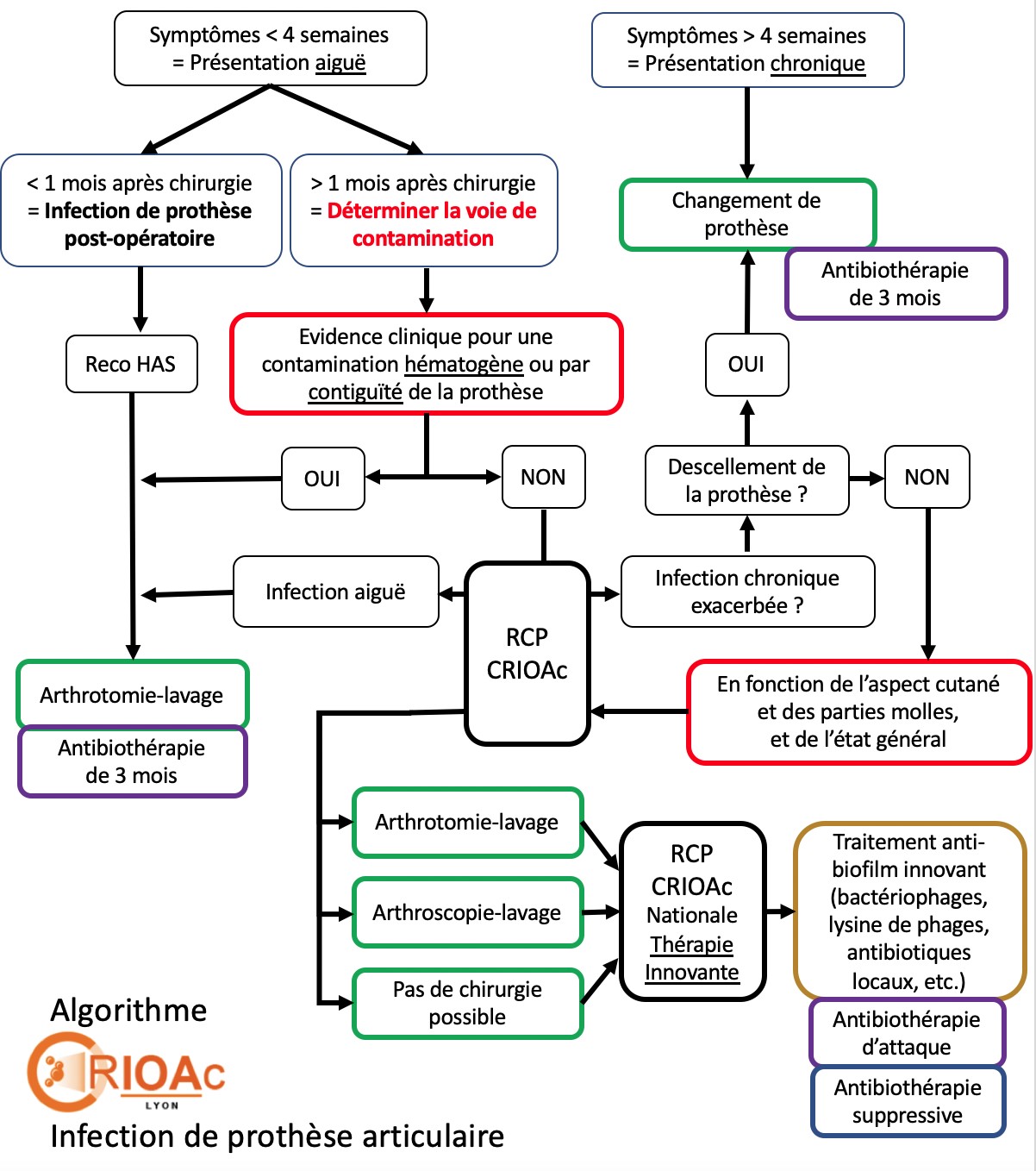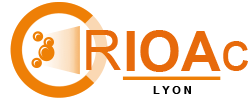The diagnosis of prosthetic joint-associated infections can be difficult, due to the complex pathophysiology of this infection, and the ways that pathogens, responsible for the infection, can evade detection. Therefore a “grey zone” can exist, when patients, truly presenting with infection, receive negative bacterial culture results. During the 2018 International Consensus Meeting in Philadelphia (ICM Philly), international recommendations were issued for the diagnosis of periprosthetic joint infection. We use these criteria at CRIOAc Lyon (summerised below) and adapt the care of each patient accordingly.

Prosthetic joint infections are complex to manage. Several algorithms are available in the literature and various international recommendations. CRIOAc Lyon has developed an algorithm which is based on a clinical approach and which takes into account the complex pathophysiology of this infection (highlighted by our research), and also takes into account the recommendations. Management is adapted to each patient, in order to treat the infection, while preserving limb function.

These different medical-surgical strategies are discussed on a case-by-case basis during MDT meetings. “Suppressive” antibiotic therapy is an oral antibiotic therapy which can be administered, if well-tolerated, for an indefinite duration. It is reserved for patients presenting chronic infection, experiencing only mild functional sequelae, and for patients who cannot undergo a change of prosthetic due to risk outweighing benefits. In this situation, eradication of the bacteria is not possible, and more often than not, long-term antibiotics can let bacteria persist in a state of dormancy in biofilm.


